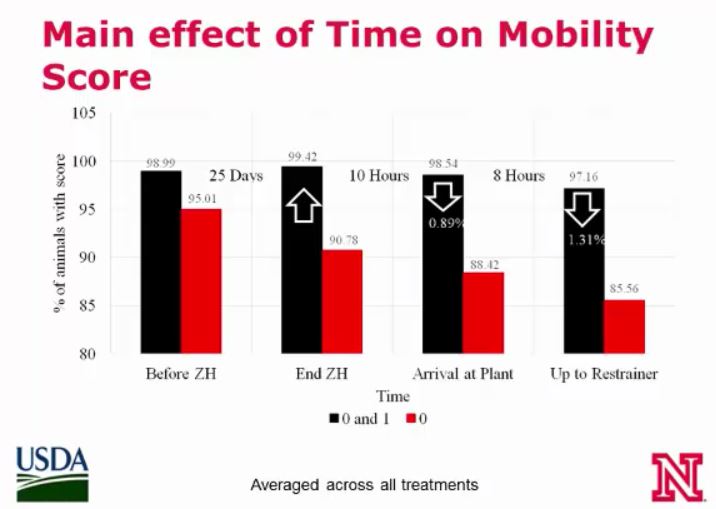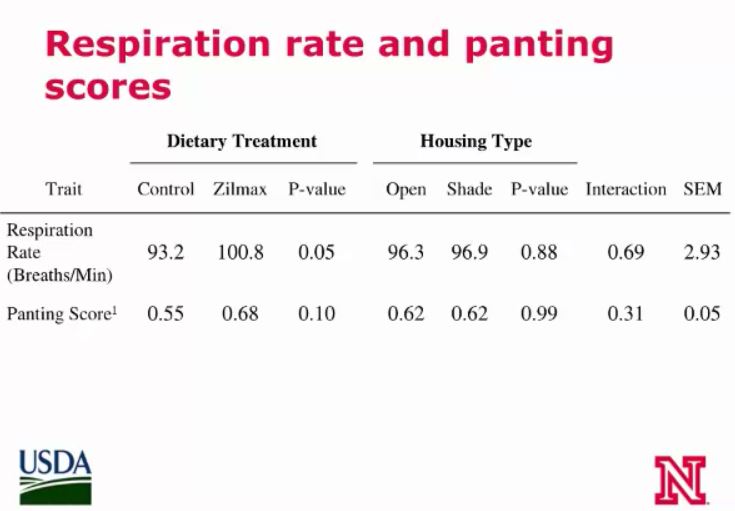



USDA Study Puts Beta-agonists Back in Spotlight
ANALYSIS - Beta-agonists are back in the spotlight with new research evaulating zilpaterol hydrochloride's (Zilmax) response in finishing cattle to performance, heat stress and animal welfare characteristics.Since the release of Zilmax, manufactured by Merck Animal Health, some have raised serious concerns about animal welfare issues, said Dr. Kristin Hales, research animal scientist at USDA's Meat Animal Research Center.
"There has been very little data collected on heat stress on Zilmax and no overall animal welfare data published on zilpaterol," Dr. Hales said. "This is one of the first data sets to be published and to characterize the effects of Zilmax on animal welfare."
Research Objective
The purpose of the study was to evaluate the effects of supplementing Zilmax® to finishing steers during the last 21 days on feed on performance, carcass characteristics, heat stress, mobility, and body temperature.
The study had two different diets, one with Zilmax® during the last 21 days and one without it; and the cattle were also in two different housing types - open dirt lots and shaded dirt lots.
"We targeted mid-July and mid-August hoping to have the peak heat of the summer occur during our study so we could evaluate heat stress," said Dr. Hales. However, she noted in her presentation that it wasn't an exceptionally hot summer.
The study focused on several measurements in addition to growth and carcass characteristics:
- Body temperature
- Panting score
- Respiration rate
- Mobility score (Tyson mobility scoring system)
- 0 = no lameness (normal)
- 1 = slightly stiff gait
- 2 = fails to keep up with the group
- 3 = severely lame and reluctant to move
- 4 = non ambulatory (down or refuses to move)
Results
Mobility scores were impacted by the time on feed. Scores observed at the packing plant were worse than scores observed at the beginning of the study, regardless of feed treatment or housing type.

When comparing housing type (open vs. shade pens), there were no differences on growth performance, carcass characteristics, or other observed measures. Though cattle in open pens tended to have slightly greater gains than cattle in shaded pens. Interestingly enough, housing type did not have an impact on the respiration rate or panting scores.
Looking at the effects of feeding Zilmax® during the last 21 days on feed, there were no differences in growth performance, but carcass characteristics differed when cattle were fed Zilmax®. Hot carcass weight increased 14kg (~30 lb), dressing percent increased 1.7%, the loin eye area increased 6.4 cm2, and the USDA yield grade decreased 8.57%.

Cattle fed Zilmax® had higher respiration rates and tended to have slightly higher panting scores; though one should note that the manufacturer’s label states zilpaterol hydrochloride will increase respiration rates.

Cattle fed Zilmax® had lower average and lower maximum body temperatures, regardless of housing type.
"What's interesting is that cattle fed Zilmax - it didn't matter whether they were in the shaded pen or the open pen, they always had a lower average and a lower maximum rumen temperature than the control cattle," Hales said.

"The take home message from this research is that zilpaterol hydrochloride improved carcass characteristics with little impact on heat stress or mobility, suggesting animal welfare was not affected by feeding Zilmax® during the last 21 days of the feeding period," said Dr. Hales.
This research was funded by the Nebraska Beef Council and USDA's Meat Animal Research Center. To hear Dr. Hale's complete presentation on the research, click here.



